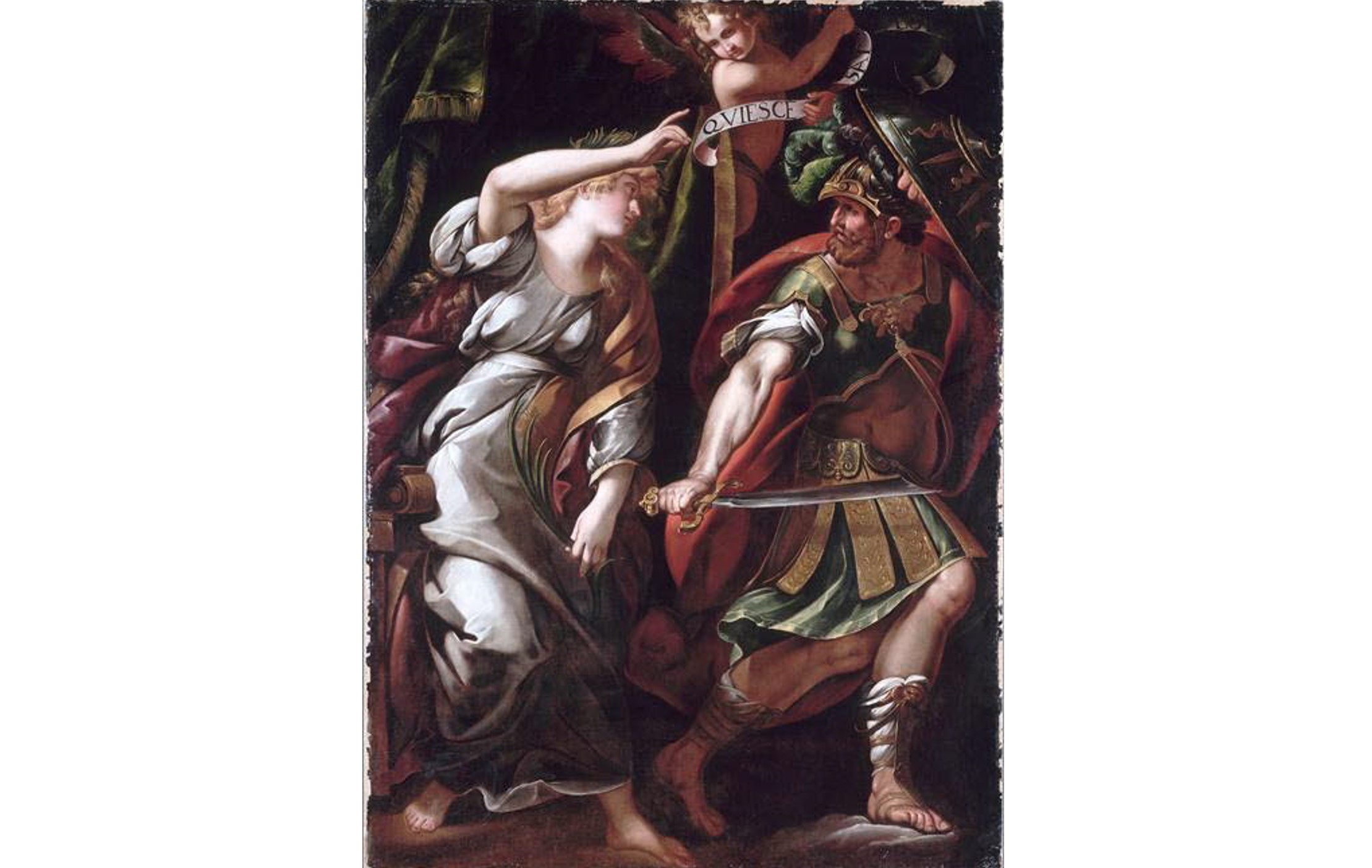+39 0669887260 | info@wucwo.org | Contact us
Art for meditation - August 2024

Giulio Cesare Procaccini (Bologna 1574 - Milan 1625), Peace chasing War, c. 1610, oil on canvas, 235 x 171 cm, Paris, Musée du Louvre
The Virtues: Peace
The beauty and power of this painting lies in the contrast between the two protagonists on the canvas, Peace and War, personified respectively by a young woman and a mature man with a beard.
The delicate and gentle figure of Peace occupies the left side of the painting, while War occupies the right side. But we notice a movement of the two figures, from left to right, which tells us that soon Peace will be the only protagonist, because War is about to leave the scene.
And what is truly unique is that in this contest between Peace and War, it is not the one who flaunts weapons, strength and arrogance that wins in the end, but rather the one who shows trust in something different and superior, as the index finger of the young woman's right hand pointing upwards suggests.
This contrast can also be seen in some of the elements of the presentation that the artist from Bologna has chosen. Peace wears a tiara of olive leaves, while War wears an ornate feathered helmet; one of them holds a small green branch in one hand, while the other wields a sword menacingly. Peace barefoot, while War wears an elaborate pair of sandals. We are struck by the fact that Peace's face is candid, illuminated by the light coming from above on the left side of the painting, while that of War is dark and in shadow precisely because of the sumptuous headgear he wears. If we look closely, we also notice that Peace has just risen from a throne slightly raised from the ground; it is very simple, made of wood, yet sufficiently visible to tell us, if we needed it, that the painter (or whoever commissioned him for the painting) has made his choice: only Peace is worthy to sit on a throne, in the same way - and we have seen this in the past months - as the theological virtues and the cardinal virtues, but above all as the Virgin Mary, who often sits on a precious throne holding on her knees - and thus becoming a throne herself - her Son, the Child Jesus.
Near indeed is his salvation for those who fear him; glory will dwell in our land. Love and truth will meet; justice and peace will kiss. (Psalm 85, 10-11)
For the peace of Jerusalem pray:“May those who love you prosper! May peace be within your ramparts, prosperity within your towers.”For the sake of my brothers and friends I say, “Peace be with you.” For the sake of the house of the LORD, our God, I pray for your good. (Psalm 122, 6-9)
For a child is born to us, a son is given us; upon his shoulder dominion rests. They name him Wonder-Counselor, God-Hero, Father-Forever, Prince of Peace. His dominion is vast and forever peaceful, From David's throne, and over his kingdom, which he confirms and sustains by judgment and justice, both now and forever. The zeal of the LORD of hosts will do this! (Isaiah 9, 5-6)
Blessed are the peacemakers, for they will be called children of God. (Matthew 5, 9)
On the evening of that first day of the week, when the doors were locked, where the disciples were, for fear of the Jews, Jesus came and stood in their midst and said to them, "Peace be with you." When he had said this, he showed them his hands and his side. The disciples rejoiced when they saw the Lord. (Jesus) said to them again, "Peace be with you. As the Father has sent me, so I send you." (John 20, 19-21)
For he is our peace, he who made both one and broke down the dividing wall of enmity, through his flesh, abolishing the law with its commandments and legal claims, that he might create in himself one new person in place of the two, thus establishing peace, and might reconcile both with God, in one body, through the cross, putting that enmity to death by it. He came and preached peace to you who were far off and peace to those who were near. (Ephesians 2, 14-17)
(Contribution by Vito Pongolini)